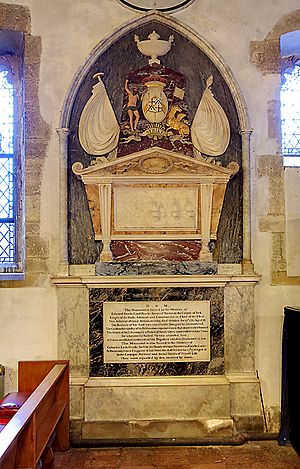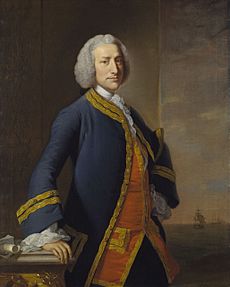Edward Hawke, 1st Baron Hawke facts for kids
Quick facts for kids
Admiral of the Fleet
The Right Honourable The Lord Hawke
|
|
|---|---|
 |
|
| First Lord of the Admiralty | |
| In office 1766–1771 |
|
| Prime Minister | Lord Chatham Duke of Grafton Lord North |
| Preceded by | Sir Charles Saunders |
| Succeeded by | Lord Sandwich |
| Personal details | |
| Born | 21 February 1705 London, England |
| Died | 17 October 1781 (aged 76) Sunbury-on-Thames, England |
| Resting place | St. Nicolas' Church, North Stoneham, Hampshire, England |
| Profession | Admiral, Statesman |
| Military service | |
| Allegiance | |
| Branch/service | |
| Years of service | 1720–1781 |
| Rank | Admiral of the Fleet |
| Commands | HMS Wolf HMS Flamborough HMS Portland HMS Berwick HMS Neptune Western Squadron Commander-in-Chief, Portsmouth |
| Battles/wars | |
Edward Hawke, 1st Baron Hawke (born 21 February 1705 – died 17 October 1781), was a very important officer in the Royal Navy. He is famous for his amazing victories at sea, especially during the Seven Years' War. He was also a member of the House of Commons and later became the First Lord of the Admiralty, which was a top job in the navy.
Hawke started his naval career as a young volunteer. He quickly rose through the ranks, showing great skill and bravery in battles. His most famous victory was the Battle of Quiberon Bay in 1759. This battle stopped a planned French invasion of Britain. He also helped create the idea of the Western Squadron, which kept French ports blocked during the war.
Contents
Edward Hawke was the only son of Edward Hawke, a lawyer from London. His mother was Elizabeth Bladen. Edward joined the navy as a volunteer in February 1720, when he was just 15 years old.
He served on ships in North America and the West Indies. By June 1725, he was promoted to lieutenant. He continued to serve on different ships, gaining experience. In April 1733, he became a commander. A year later, in March 1734, he was promoted to captain.
First Major Battle: Toulon
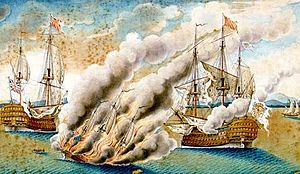
In June 1743, Hawke became the commanding officer of the ship HMS Berwick. His first big battle was the Battle of Toulon (1744) in February 1744. This battle was part of the War of the Austrian Succession.
The battle was quite confusing, but Hawke and his ship performed well. His ship even captured the only enemy ship taken during the battle, a Spanish ship called Poder. After this, he was given command of the larger ship HMS Neptune in August 1745.
Victory at Cape Finisterre
After Toulon, Hawke was promoted to rear admiral in July 1747. He became second-in-command of the Western Squadron. This squadron was important for watching French ports in the English Channel.

In October 1747, Hawke took over as the main commander of the Western Squadron. He worked hard to improve his crews and make them proud of their service. He then led his fleet to wait for a French convoy coming from the West Indies. In the Second Battle of Cape Finisterre (1747), he captured six French ships. This victory, along with an earlier one by Lord Anson, gave Britain almost complete control of the English Channel. This was very bad for the French economy and helped Britain get a good peace deal.
Peace and Politics
When the war ended, Hawke's active sea service paused. In December 1747, he was elected as a Member of Parliament for Portsmouth. He represented this naval town for 30 years.
He became vice admiral in May 1748. He also became the Port Admiral at Portsmouth for three years. In 1749, he was made a Knight Companion of the Order of the Bath.
The Seven Years' War
As another war with France seemed likely, Hawke was called back to duty in 1755. He reactivated the Western Squadron and successfully captured over 300 French merchant ships. This made relations between Britain and France even worse, leading to the start of the Seven Years' War in 1756.
Menorca and Rochefort
Hawke was sent to the Mediterranean in June 1756. He was to replace Admiral John Byng, who had failed to help the island of Menorca (Minorca). By the time Hawke arrived, Menorca had already surrendered to the French.
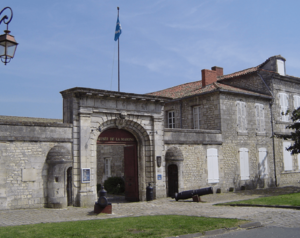
In 1757, Hawke was part of an expedition to land troops on the French coast at Rochefort. After capturing an offshore island, the army commander hesitated. Hawke insisted on an immediate attack, but the expedition returned to Britain without a major attempt on the town. This failure led to an investigation. Hawke was promoted to full admiral in February 1757.
The Famous Battle of Quiberon Bay

In May 1759, Hawke was back in command of the Western Squadron. At this time, France was planning a big invasion of Britain. A French army was ready, and their navy planned to take control of the English Channel to allow the invasion force to cross.
On 20 November 1759, during a strong gale, Hawke made a very risky decision. He chased the French fleet into an area full of hidden rocks and shallow waters in Quiberon Bay. The British ships did not have good maps of this dangerous area. The French admiral thought the British ships would crash.
Hawke famously told his ship's master, "You have done your duty Sir, now lay me alongside the Soleil Royal." He meant he wanted to fight the French flagship directly. Hawke won a great victory in the Battle of Quiberon Bay. This, combined with another British victory at the Battle of Lagos, completely removed the threat of a French invasion. Hawke was a bit disappointed he hadn't captured more ships, wishing he had more daylight.
Blockading the French Coast
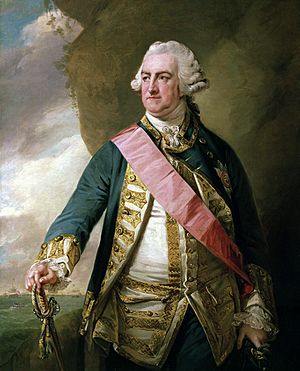
Even after Quiberon Bay, the British kept a tight blockade on the French coast. This stopped French trade and weakened their economy. Hawke returned to command the blockading fleet off Brest. The British effectively blocked the entire French coast.
Capturing Belle Île
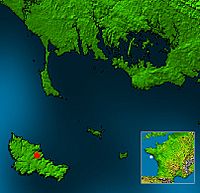
In 1761, Britain decided to capture the island of Belle Île off the coast of Brittany. Hawke was against this plan, thinking it wasn't strategically useful. Despite his concerns, the British successfully captured the island in June 1761. While it was another victory, Hawke's doubts about its usefulness proved true.
First Lord of the Admiralty
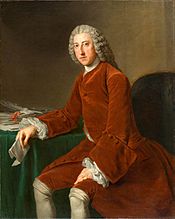
Hawke retired from active duty in 1763. He became Rear-Admiral of Great Britain and later Vice-Admiral of Great Britain. In December 1766, he was made First Lord of the Admiralty, a very high position in the navy. He was promoted to Admiral of the Fleet in January 1768.
As First Lord, Hawke successfully managed the navy's spending. He also oversaw the navy's readiness during the Falklands Crisis (1770) in 1770. He was replaced by Lord Sandwich in January 1771.
Hawke also played a key role in giving Captain James Cook command of his first famous expedition in 1768. Cook later named several places in the 'New World' after Hawke to show his thanks.
Hawke was given the title of Baron Hawke in May 1776. He died on 17 October 1781, at his home in Sunbury-on-Thames. He was buried at St. Nicolas' Church, North Stoneham.
Family Life
In 1737, Edward Hawke married Catherine Brooke. She was the only daughter and heiress of Walter Brooke. They made their home at Scarthingwell Hall in Yorkshire. They had three sons and one daughter who survived, along with three children who died very young.
|


